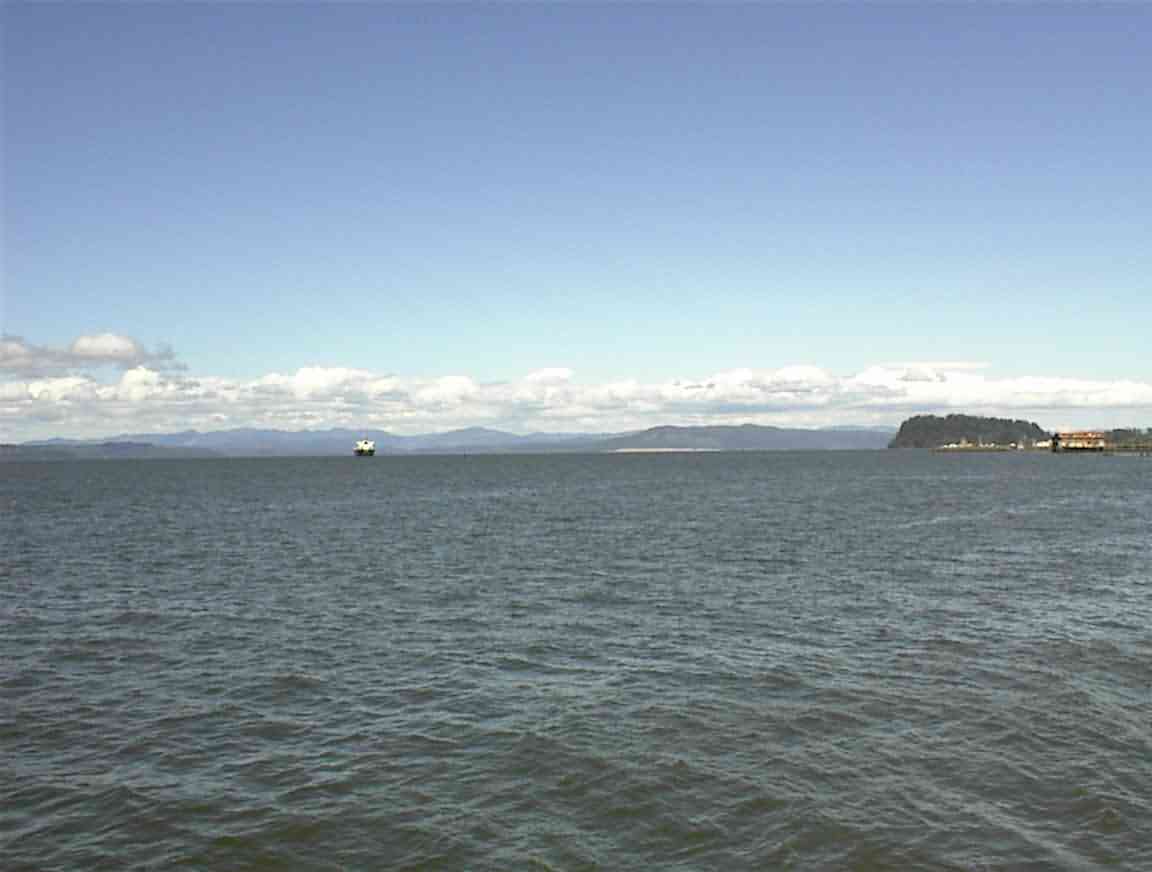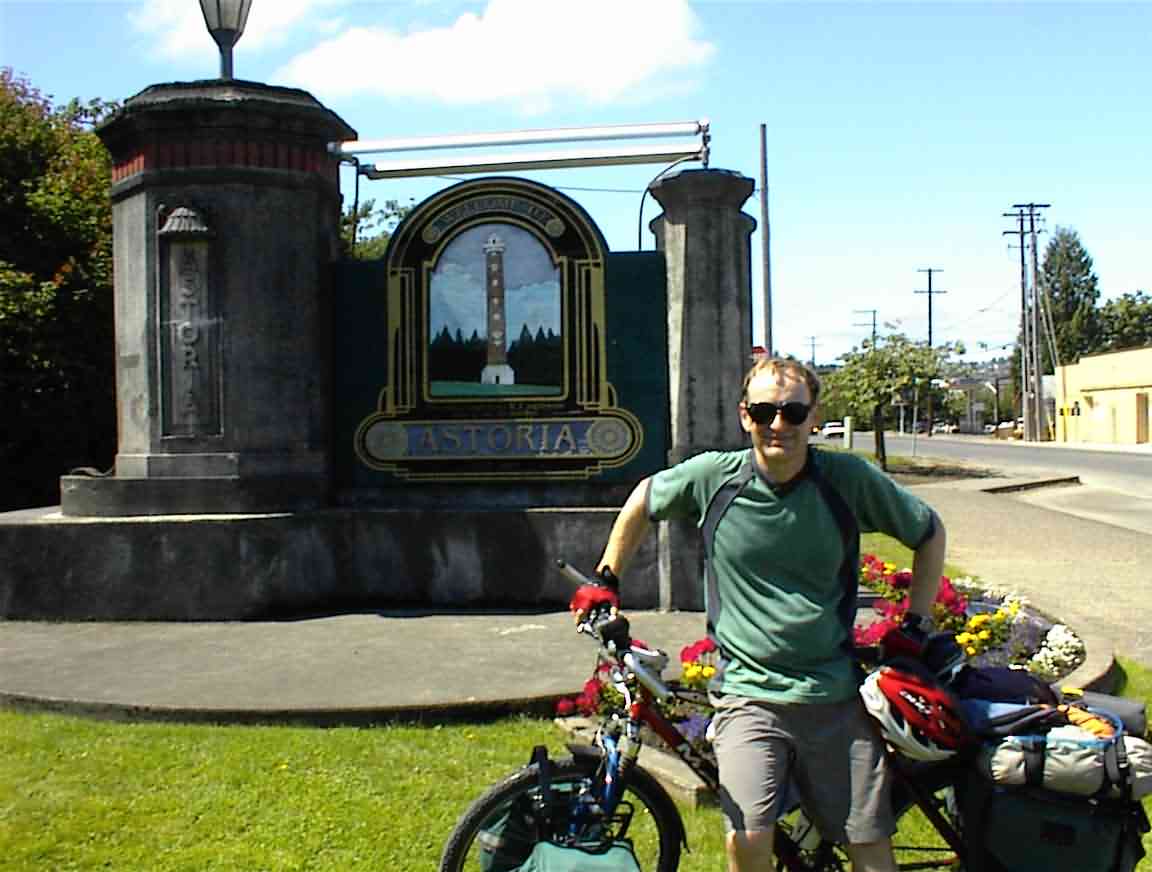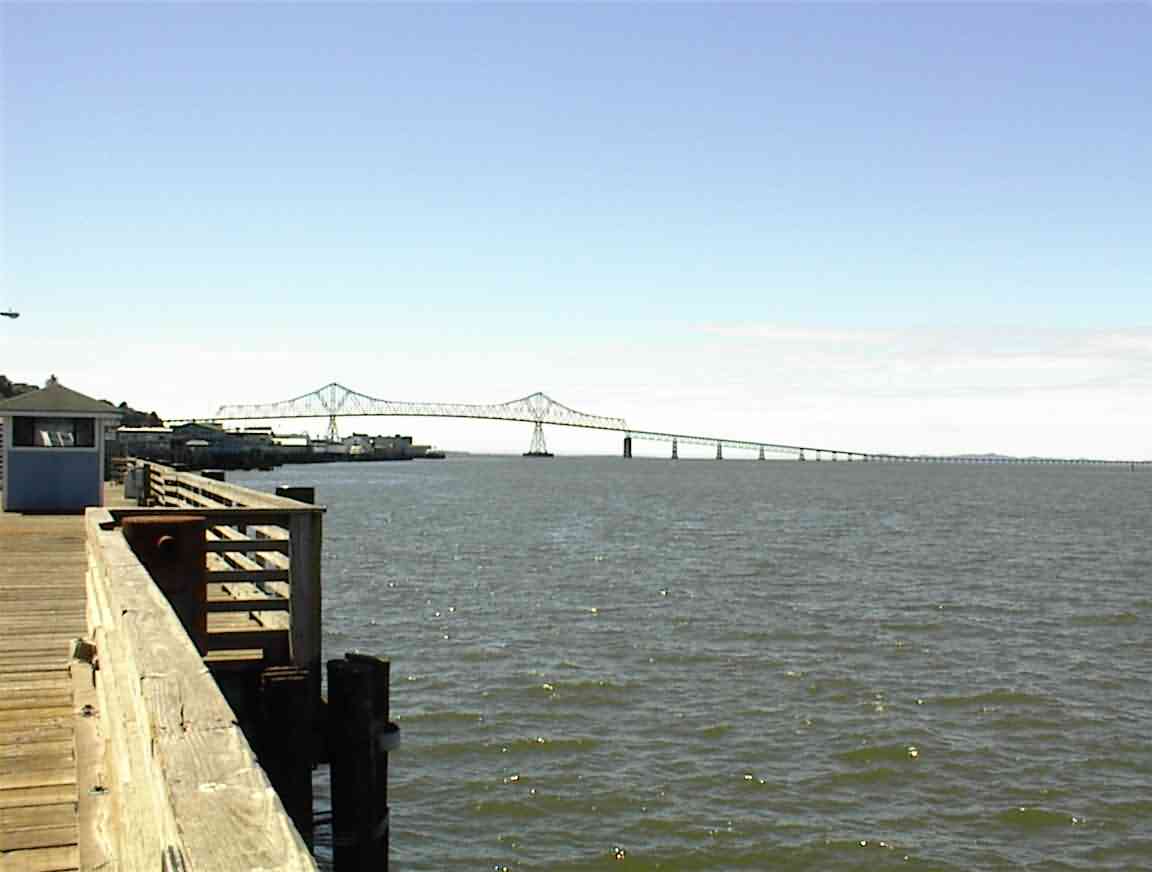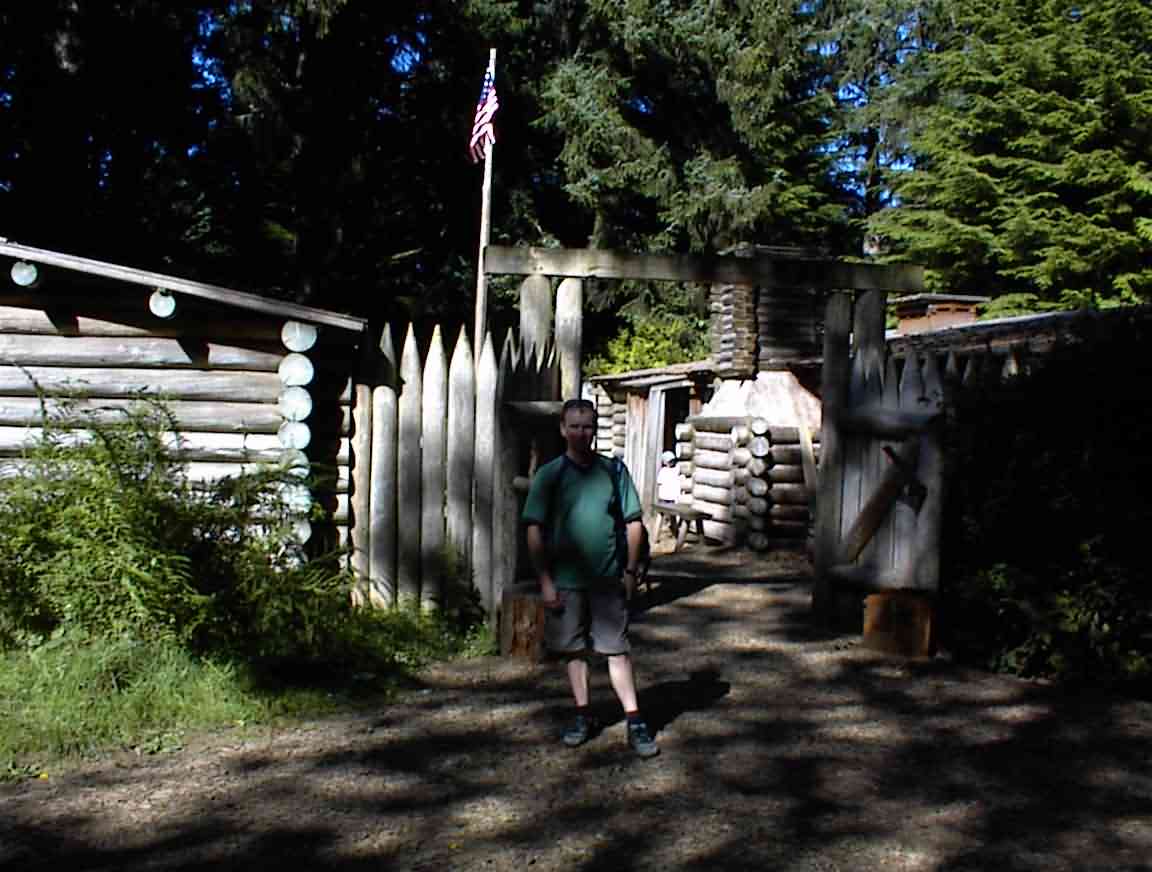
Day 12 - Clatskanie OR to Astoria OR (81 miles)
"Great joy in camp we are View of the Ocian, this great Pacific Octean which we ben So long anxious to See. and the roreing or noise made by the waves brakeing on the rockey Shores (as I suppose) may be heard distinctly" - William Clark, November 7, 1805.
There is always something special about reaching the goal in a cycle trip. With both my Trans-American and Rocky Mountain trips it had taken me 8 weeks, and both were much more arduous than this 12 day jaunt, so the anticipation was much more palpable (coupled with a sense of relief!). For L&C they had been travelling since 14 May from their winter camp near Missouri and had survived almost indescribable hardships. They were also hoping to come into contact with sailing vessels who could replenish their supplies and carry their letters and supplies home. Trading ships arrived frequently enough that the Chinook Indians understood and spoke English words and they even gave L&C a list of captain's names. Unfortunately, none ever arrived while L&C were in the area.
My route took me towards Astoria which is on the south (Oregon) side of the Columbia bay inlet. L&C followed a route to the north (Washington) side, although they ended up establishing their winter settlement near Astoria. Things weren't easy for them since for several days they were pinned against the shoreline, trying to shelter themselves from strong wind, waves and rain. They were soaked to the bone, their clothes rotting off their backs, and many were seasick from the rolling of their canoes on the river swells.
I enjoyed yet another day of brilliant weather, although there was a headwind. The first 10 miles were on the flat, but then I entered into rolling terrain which would accompany me to the end of my trip. It was a nice ride through beautiful country, but I was really focused on the mouth of Columbia River.
The river opens into a huge bay before exiting to the Pacific across the famous Columbia bar. This bar is so dangerous and difficult to cross, particularly due to the poor weather conditions that many ships have been wrecked. I was looking forward to visiting the Maritime Museum in Astoria where the nautical history of the Columbia was presented.

The Columbia was named after the first vessel to cross the bar. This American ship laid claim to the area and then continued north where they encountered Capt. George Vancouver of the Royal Navy. He also entered the Columbia and explored further upriver, preparing charts. I believe that they got as far as Portland and the Willamette river.
Astoria was first established as a trading post by John Jacob Astor. I was pleased to reach the outskirts of the city where a kind passerby took the photo below. It was around mid-day on Sunday so I cycled into town to find lunch.

The town did not seem to have many modern buildings, and looked slightly down on the heels in some places. However, there was a vibrant Sunday market which I wandered through. I was able to by fresh cherries and other fruit so I had a delightful meal while admiring the various crafts, food and other items displayed by the vendors. The place was packed with people and there was an excellent jazz band playing. One area was full of eateries but unfortunately, there was nothing for vegetarians. No big deal. I had stoked up on my fruit so could go on until dinner.
I cycled back to the Maritime museum and spent several hours wandering through. They had a special display on the sea rescue boats which was most interesting. The US Coast Guard bases its sea rescue school near Astoria since the regular miserable weather gives them opportunities to practice in extreme conditions. A video showed what they had to deal with and it was not for the faint of heart!
There was a huge array of flotsam and jetsam recovered from the shipwrecks and it was sobering to see how many ships had been lost in the area. And we are not just talking about sailing ships in days of old; even modern container ships are lost.
One very unusual display was of the Columbia bar light ship. Since the bar is so dangerous, they anchored a moderate sized ship off the mouth for many years acting as a light house. The crew would spend much of their time coping with the conditions, although in better weather they could relax and entertain themselves by fishing. More than once vessels in distress made it to the ship just before sinking -- including the crew of a Coast Guard rescue vessel.
After leaving the museum I headed towards the ocean. The 'Astoria Bridge' was visible ahead of me, crossing to Washington. I would need to cycle this tomorrow and it was a bit daunting; the bridge was about 5 miles long. There was a high span at the Astoria end, and then a long, low bridge on piles heading towards Washington. Bridges are not fun on a bicycle as the designers seldom allowed sufficient extra width, but there was no other option. I would have far preferred a ferry ride!

I found a motel just past the bridge and after dropping my bags in the room I cycled off towards 'Fort Clatsop' National Memorial. This was about 7 miles from Astoria and where the L&C expedition established their winter camp for 1805-6. The Clatsop were the local Indian tribe and they traded with the L&C expedition.
A replica has been built of Fort Clatsop and there were volunteers in period garb explaining what conditions were like. The fort was very small with two buildings separated by a parade ground. Conditions would have been unpleasant at the best of times, and in a winter where it rained for 88 out of 100 days, it must have been very difficult.

They used their time here hunting, making salt at Seaside (by boiling sea water) and creating clothes for the return journey. Lewis and Clark also worked on their journals and maps. It was interesting to contrast their approach to the native Indians. The latter existed mainly on fish and roots, whereas elk was the staple of the L&C expedition. Before too long they had hunted out the area and needed to go further and further afield to find elk.
There was a museum with an excellent film on the L&C expedition. It was incredible to think that they crossed the continent in both directions and only lost a single person, to what they suspect was appendicitis. The museum was packed with people, most of whom seemed to congregate in the gift shop. It was interesting to see a display of William Clark's family tree. Unfortunately, Meriwether Lewis committed suicide shortly after finishing the expedition leaving no heirs.
As I cycled back to Astoria I could see in the river leading down to the Columbia piles from old buildings. The same was also in Astoria. These were a legacy of the salmon canneries which 100+ years ago were part of the huge salmon industry in the area. These employed people from all over the world and in the Maritime Museum there was a most interesting history of the different people who came to work in the industry. Unfortunately, over fishing wiped out most of them, and today there isn't a cannery in Astoria.
There was an extremely strong headwind on my way back to Astoria and I was glad that I hadn't battled it for the entire trip. I cycled into town to grab dinner which was at a Mexican restaurant. The portion was too large for me to finish which made me wonder why they didn't reduce it to save an (a) wastage and (b) their customer's waist lines.
It was then back to the room where I watched some of the Tour de France (go Lance!) and had an early night. Tomorrow it was north towards Seattle where I would meet up with my wife.
Home to Next Day
loans loans loans loans loans loans loans loans loans loans loans loans loans loans loans loans loans loans loans loans loans loans loans loans loans loans loans loans loans loans loans loans loansloans loans loans loans loans loans loans insurance insurance mortgage mortgage